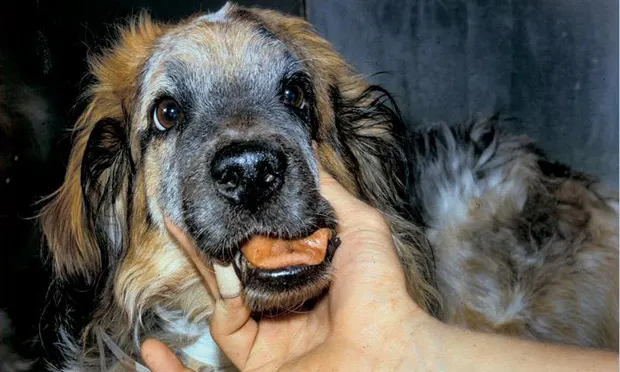Advanced Renal Osteodystrophy

Figure 1. (above) This dog is a 6-year-old, castrated male that had signs of polyuria/polydipsia, progressively decreased appetite, and weight loss for several months before admission. Vomiting had been reported over the previous few weeks. The patient presented in a state of advanced renal failure with isosthenuria, BUN 155 mg/dl, and serum creatinine 8.0 mg/dl. Aside from physical signs of emaciation and dehydration, the photo shows left lateral jaw displacement upon palpation due to "rubber jaw." Necropsy confirmed end-stage renal disease as evidenced by bilateral contracted and fibrotic kidneys.
Related Article: Anesthesia for Parathyroid Disease

Figure 2. (left) An 8-month-old, male golden retriever that had chronic polyuria/polydipsia since weaning. Growth retardation occurred over the ensuing months followed by weight loss, decreased appetite, and periodic vomiting. The physical examination was remarkable for facial deformity characterized by firm maxillary swelling due to a variant form of renal osteodystrophy. This dog also had isosthenuria along with a BUN and serum creatinine levels of 186 mg/dl and 9.9 mg/dl, respectively. He also had end-stage renal failure, which is typical of this degree of renal osteodystrophy. At necropsy, both kidneys were small, cystic, and fibrotic.
Related Article: Staging & Management of Feline Chronic Kidney Disease